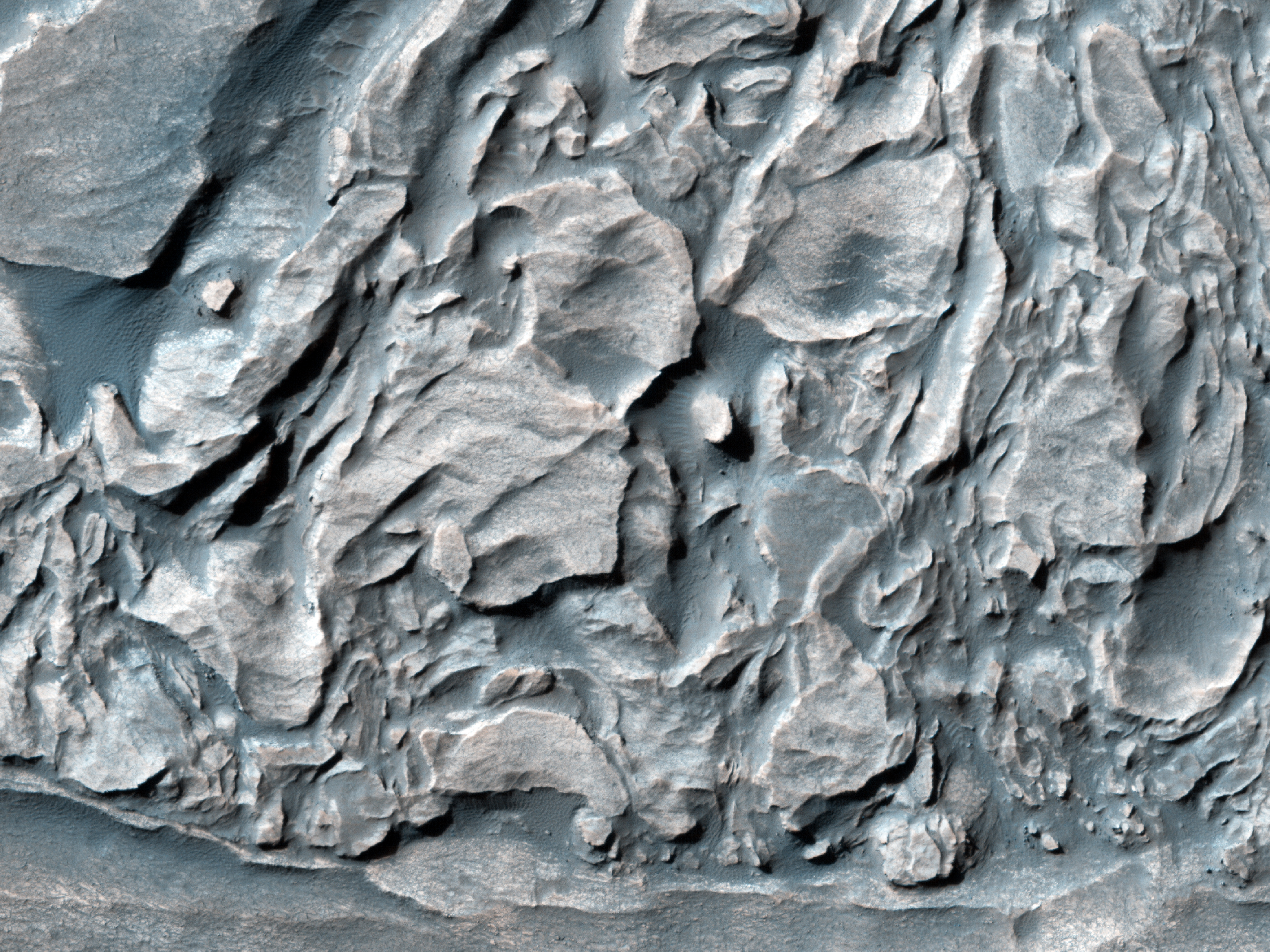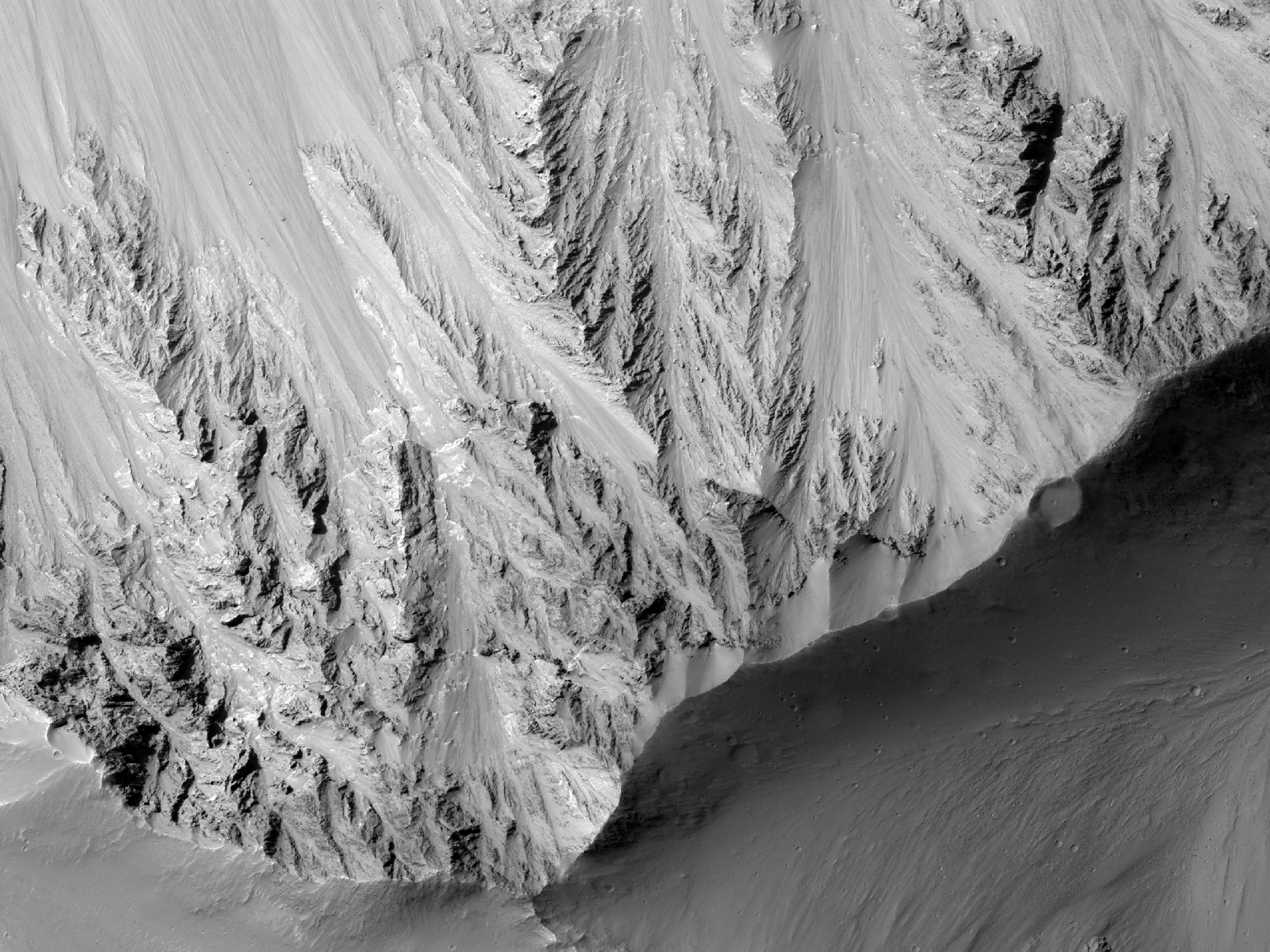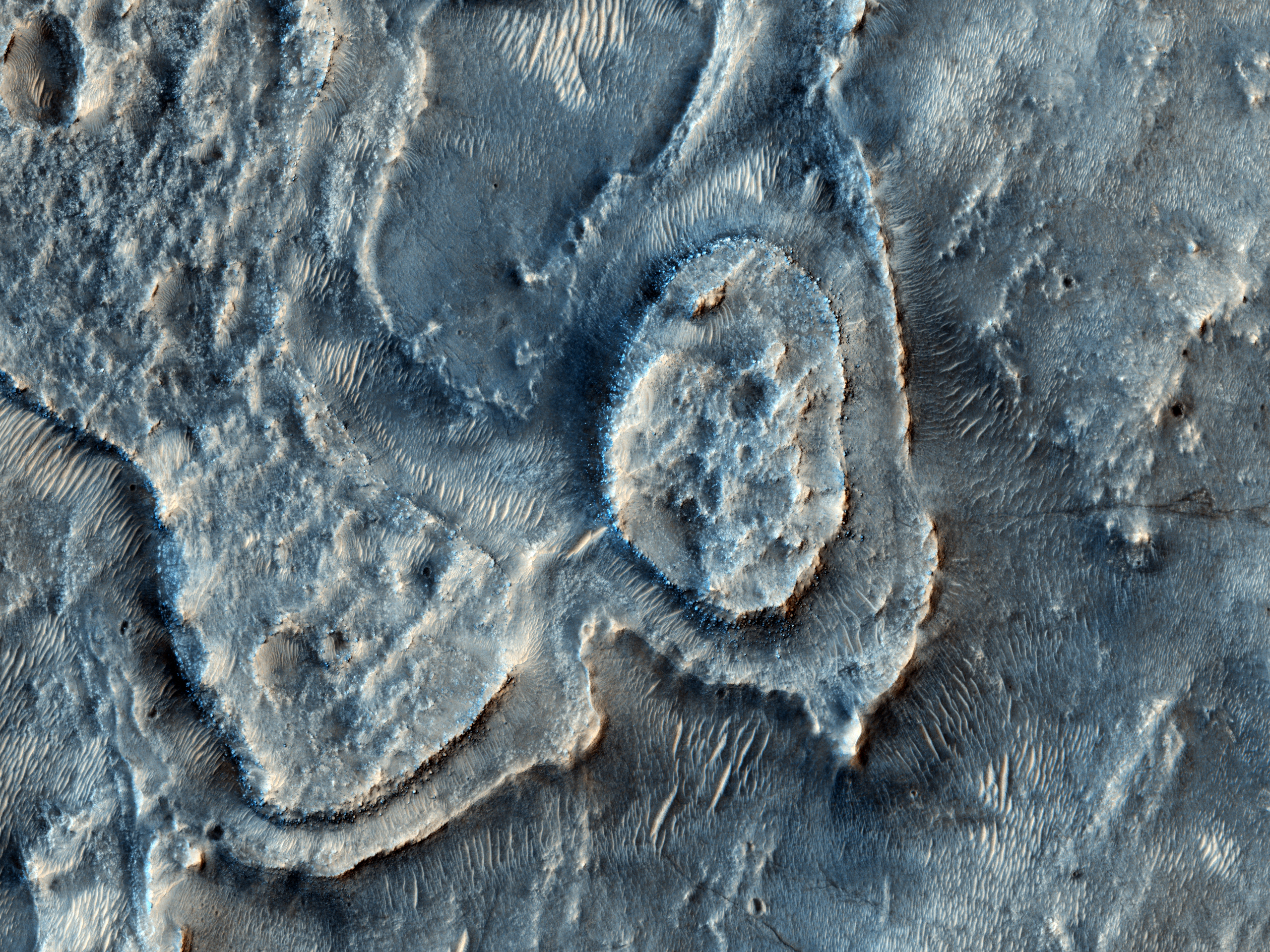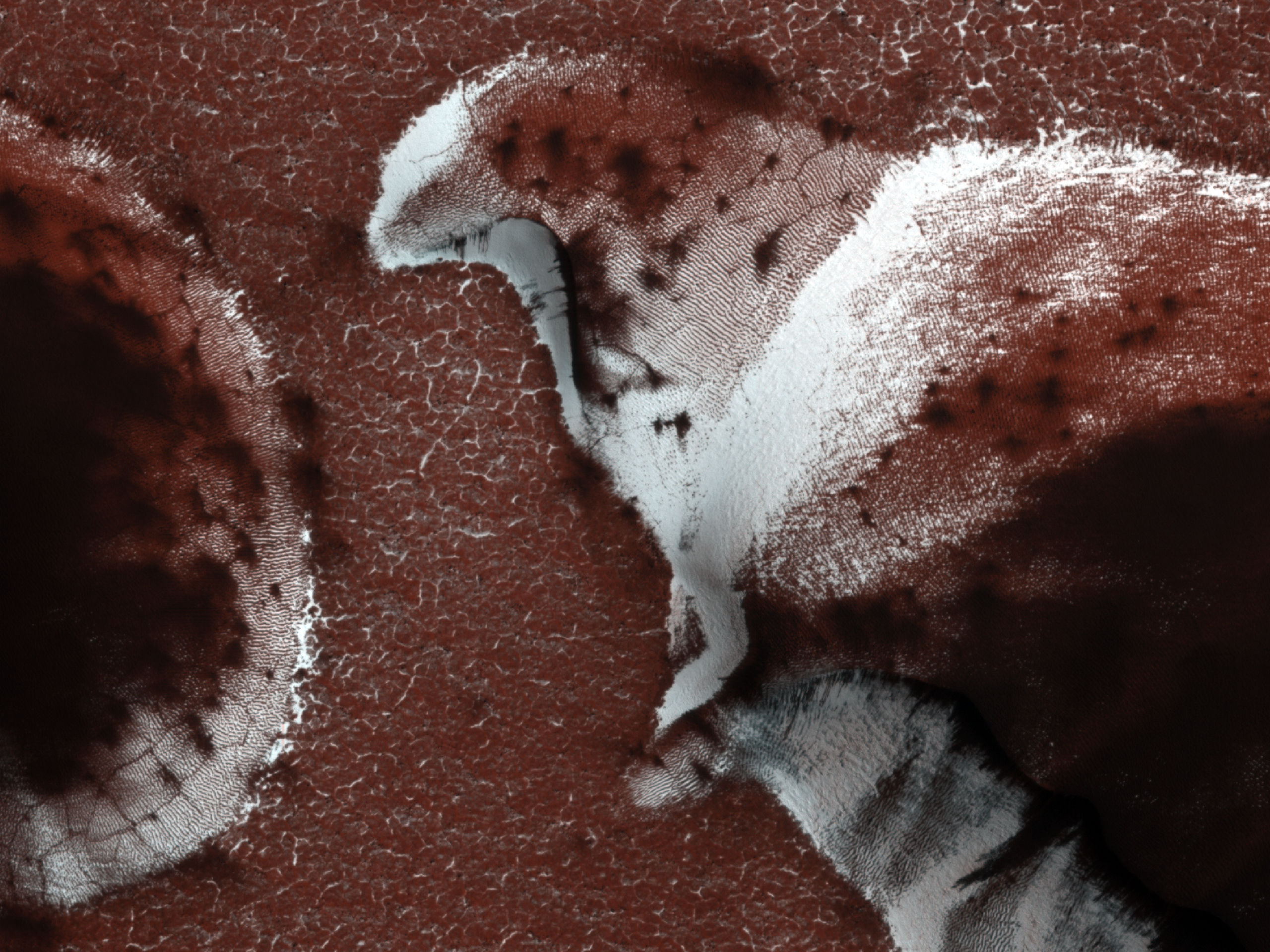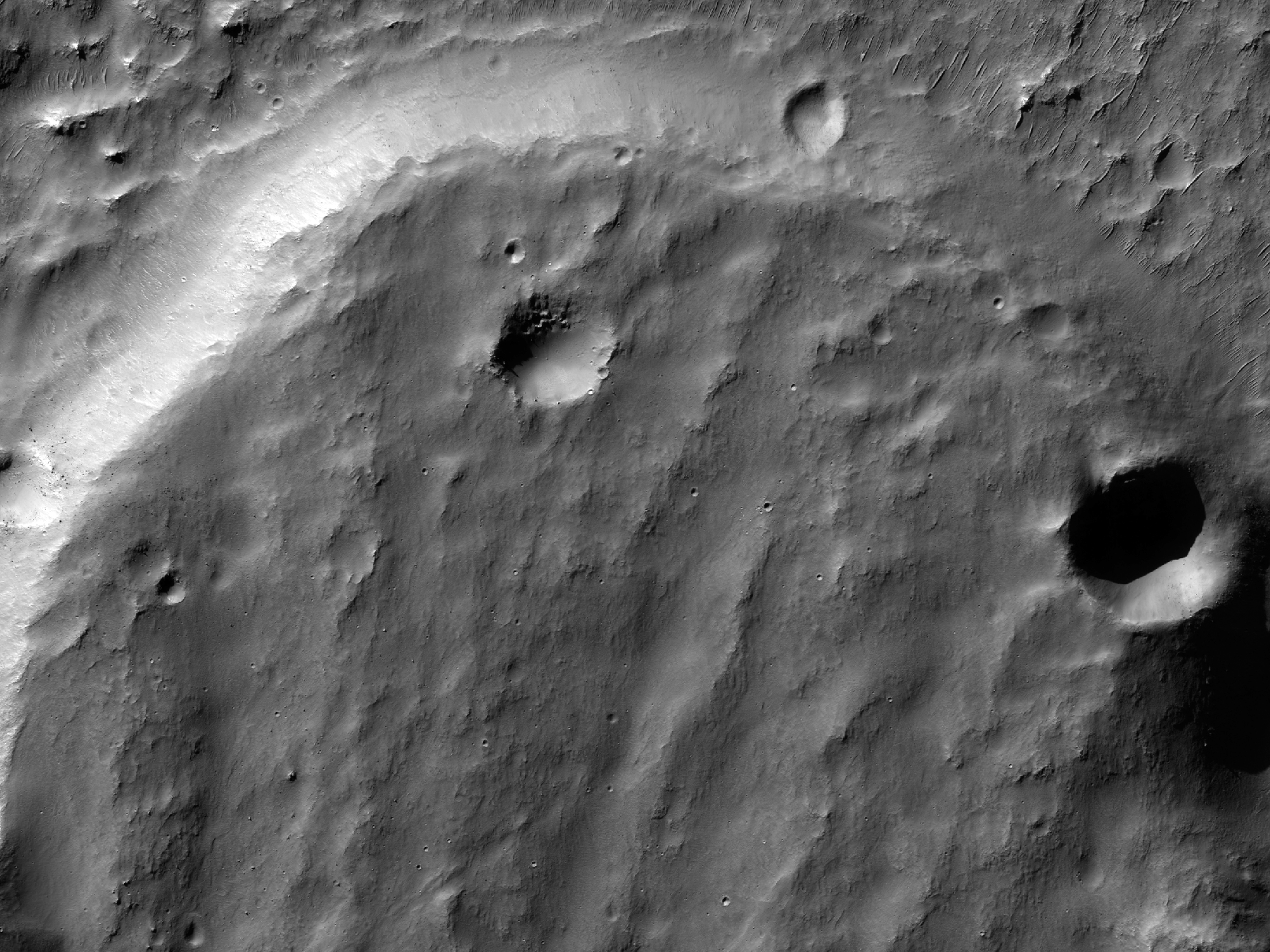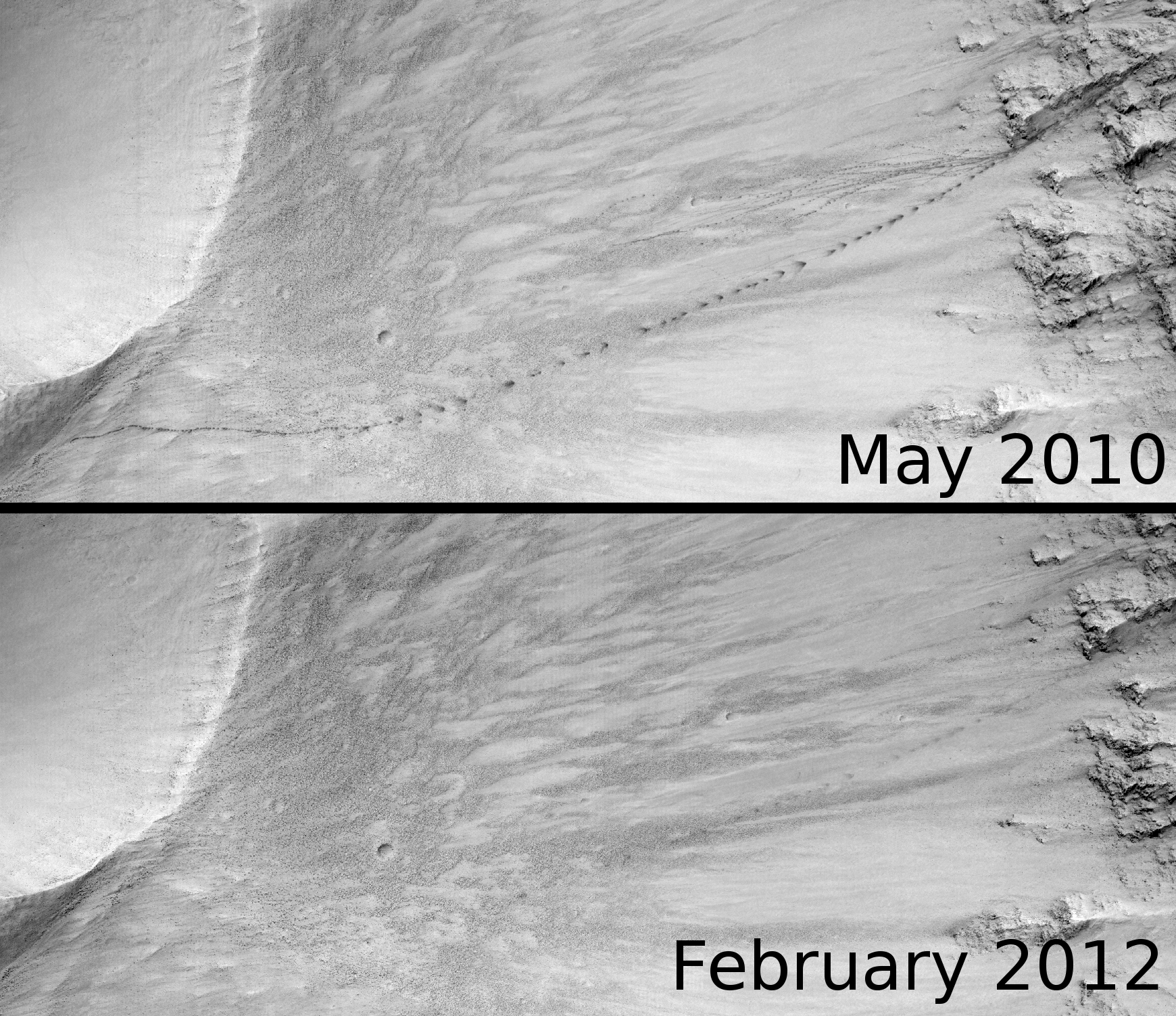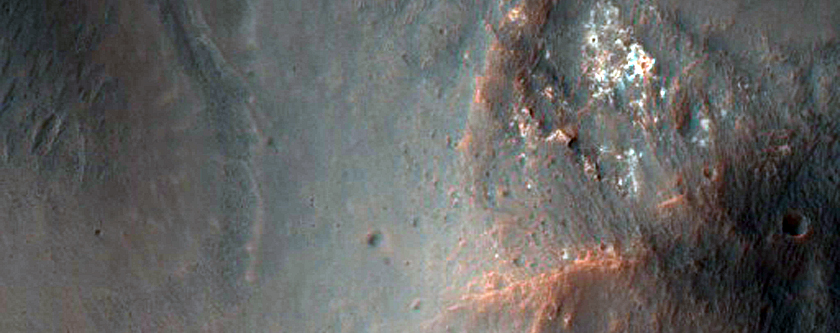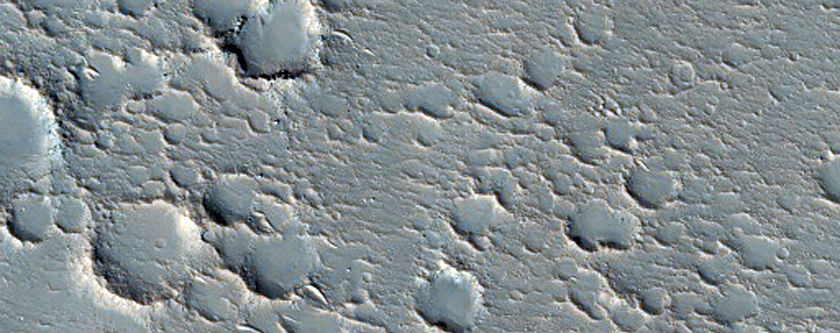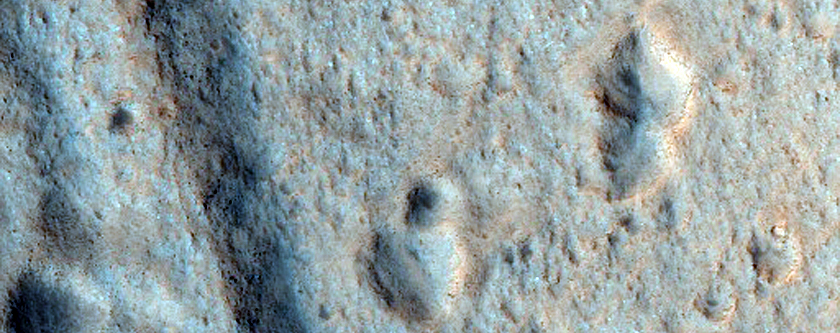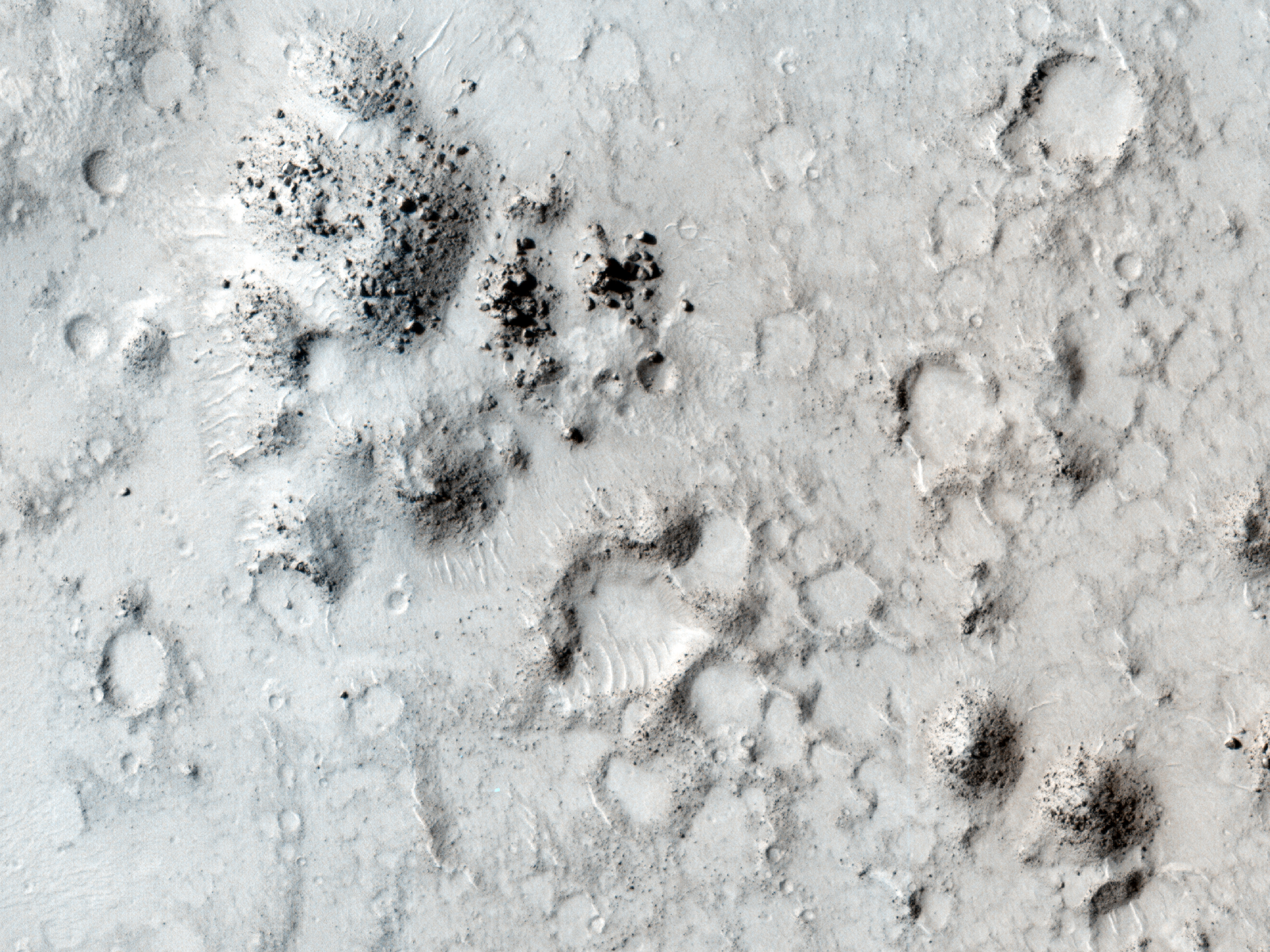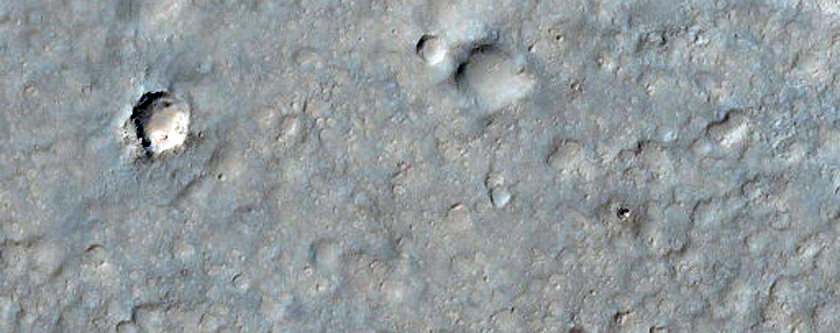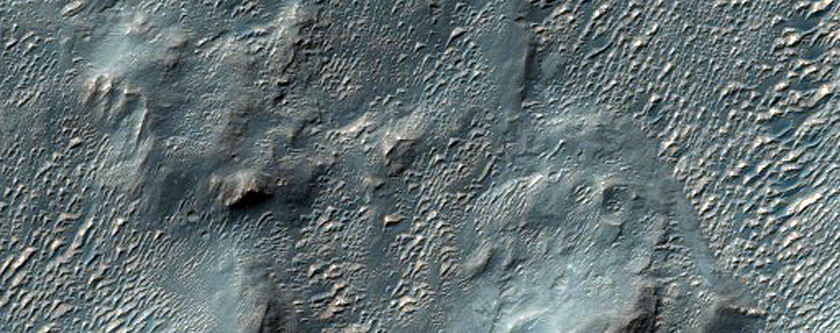Today's Image of Mars shows some of the thickest fine-grained layered deposits on The Red Planet. These layers are in West Candor Chasma, which is located in central Valles Marineris. Scientists have been able to determine that the layers are fine-grained because the wind picks up small particles and carries them through the air, which HiRISE is able to detect.
But what deposited these layers? One explanation is that wind, volcanic ash, or water, or a combination thereof deposited the layers, which were then altered by ground water. When alter by the ground water the minerals became hydrated and formed clays and sulfates. Water was abundant in Hellas Basin during different periods, so it is possible that this multitude of water could be responsible for the extremely thick layers, since the more water there was, the larger the layers.
Click on the image below to see the original image from HiRISE. [See the HiRISE caption]


